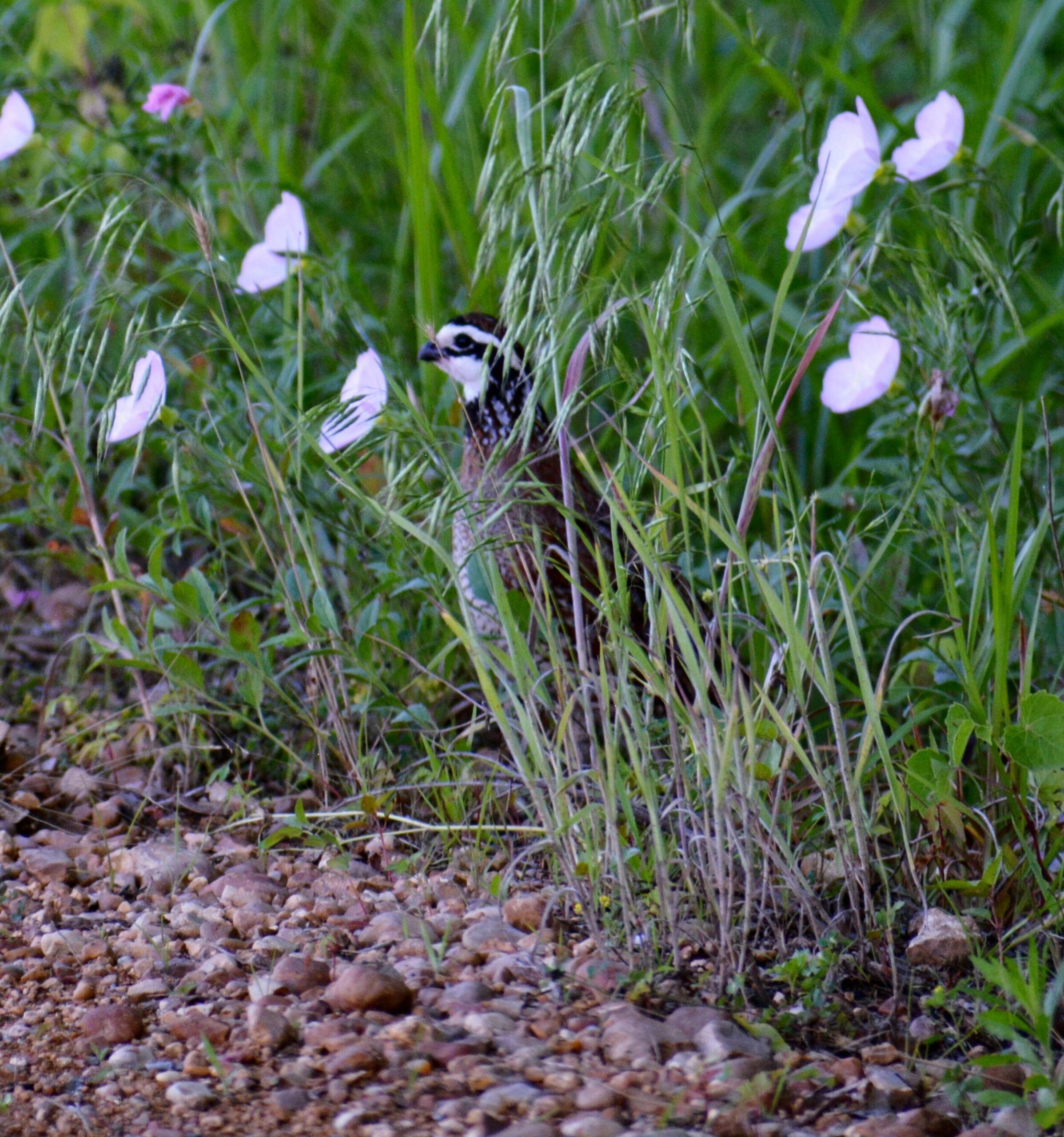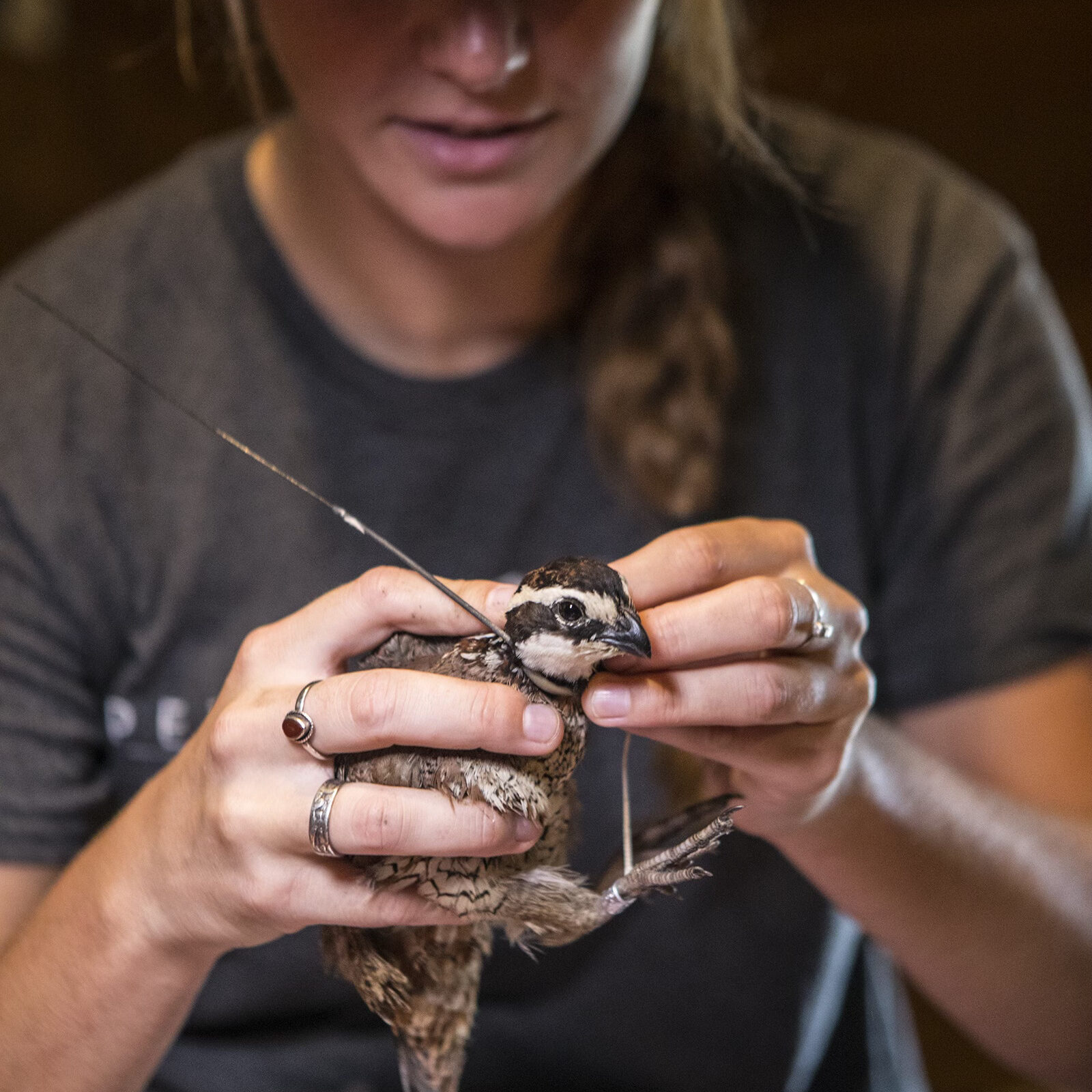Northern bobwhite (Colinus virginianus) have been considered a beloved gamebird of the North American hunter for generations. Unfortunately, bobwhite populations are experiencing range-wide population declines. By the early 1990s, bobwhite populations declined by 60-80% throughout approximately 70% of their range. Declines can be attributed to loss of habitat through changes in farming and timber practices since the 1940’s.
Bobwhite are a diurnal species which tend to select nocturnal ground roost sites to minimize predation and optimize thermoregulatory costs. During the fall-winter bobwhite congregate in social groups, called coveys, and tend to roost in disk-like formations (i.e., with heads pointing towards the outside of the disk) to maximize vigilance and conserve heat. This formation can help increase chances of overwinter survival. Coveys include individual bobwhite from either the same or different family groups and are most often composed of 10-15 individuals. Groups will join other nearby coveys in situations where covey numbers are too small and insufficient to form a large enough disk for adequate heat conservation and vigilance.
Although bobwhite may be one of the most studied game species, questions still exist about their habitat requirements and behavior. For example, although past studies have described roosting areas of bobwhite, most only quantified roost site selection of coveys during fall-winter. Roost site selection likely has implications for near-term survival and long-term fitness of individual bobwhite.
This motivated us to research, for the first time for this species, roost site selection of individuals during the breeding season (~ 6 months). By examining breeding season roost site selection, we may be able to better understand and make informed decisions on habitat management for this species.
We captured a total of 61 birds between 2021 and 2022, collaring 28 birds (14 female, 14 male) in 2021 and 30 birds (13 female, 17 male) in 2022. We assessed 163 individual roost sites over the course of the study period. We found that individual bobwhite chose to roost in areas with less bare ground cover, greater litter cover, and taller vegetation. This may allow for better concealment from nocturnal predators. Interestingly, past research has shown that when bobwhite roost in coveys during the winter, they often select for roost sites with more bare ground and short vegetation with less visual obstruction of vegetation. These findings show further evidence of the importance of a mosaic of vegetational components, in terms of both dispersion and configuration, necessary for bobwhite population persistence. Creating a landscape with varying vegetational components throughout provides necessary components for bobwhite during all stages of their annual life cycle.
Bobwhite are a popular gamebird and habitat management for this species has shown to benefit a myriad of other wildlife species creating an opportunity for future and continued multi-species habitat management practices.
Olivia Lappin
Integrated habitat management coordinating wildlife biologist
Pheasants and Quail Forever
The results of this study were recently published in the Journal of Field Ornithology:
Lappin, O. A., K. O. Evans, R. B. Iglay, and M. D. McConnell. 2023. Northern Bobwhite (Colinus virginianus) breeding season roost site selection in a working agricultural landscape in Clay County, Mississippi. Journal of Field Ornithology 94(4):4. https://doi.org/10.5751/JFO-00368-940404.
Header photo: Northern bobwhite (Colinus virginianus) by Alvaro Garcia/NPS.


